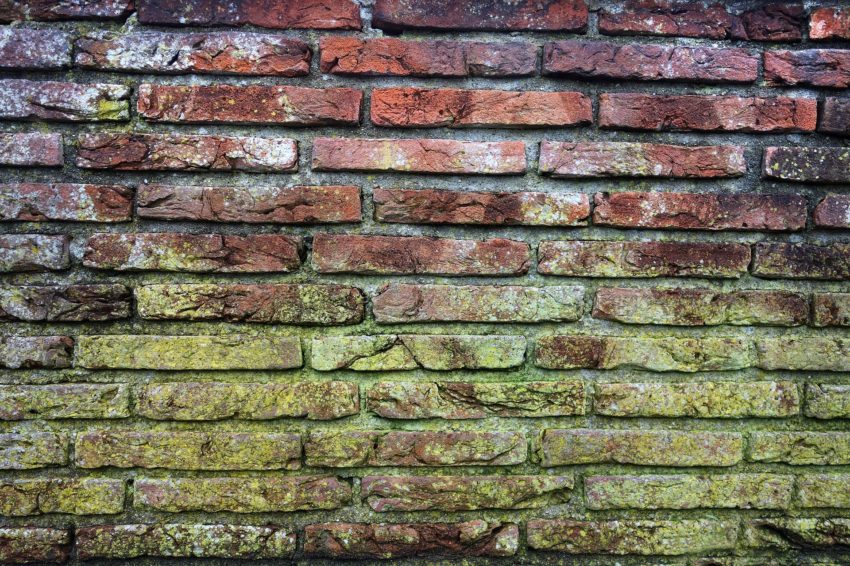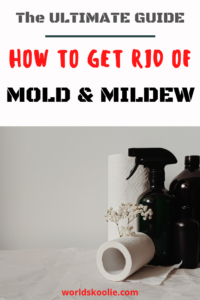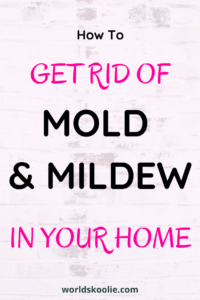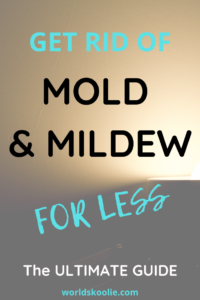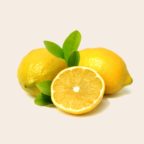It’s turning to winter. The air is damp, windows are often closed, and condensation abounds creating the perfect conditions for mold and mildew to take hold in your home.
These two can cause health problems like allergies, breathing difficulties, damage to property and are unsightly too.
This post covers mold vs mildew, where they grow, and how to remove mold and mildew from kitchens, bathrooms and more using cheaply found non-toxic cleaning solutions.
Let’s dive in.
What is Mold?
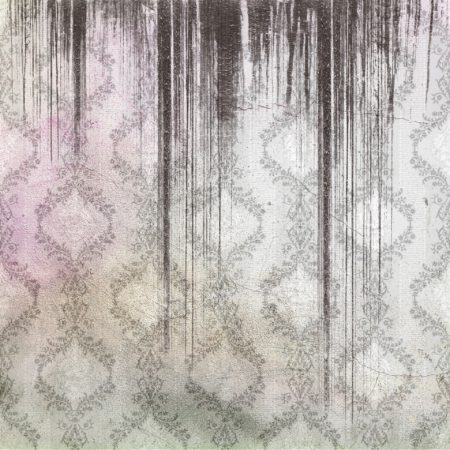
Mold (aka as mould) is a ubiquitous fungal microbe that is commonly found in household dust.
When mold spores are present in large numbers, they present a health hazard to us through allergic reactions, respiratory and neurological problems.
You can spot them because they grow in shades of black, blue, red, and green, causing discolouration and a fuzzy appearance on food and other materials when they form large colonies.
Mold has a dusty texture due to all the spores it creates and causes biodegradation to substrates which leads to household damage.
Since prolonged daily exposure to mold may be harmful, it’s in our interest to reduce our exposure to it and have cleaning methods that remove and inhibit future growth.
Where Is Mold Usually Found & Why Is It Growing There?
Mold in the home can usually be found in damp, dark, or steamy places.
Bathrooms, kitchens, cluttered areas, basements, or areas with poor ventilation are common environments for mold.
Mold grows on paper, wood, drywall, brick, and insulation – i.e. wherever there are moisture and food sources for it to grow.
Mold spores float in the air and grow when they land on surfaces that are wet.
What Difference Does Mold Make?
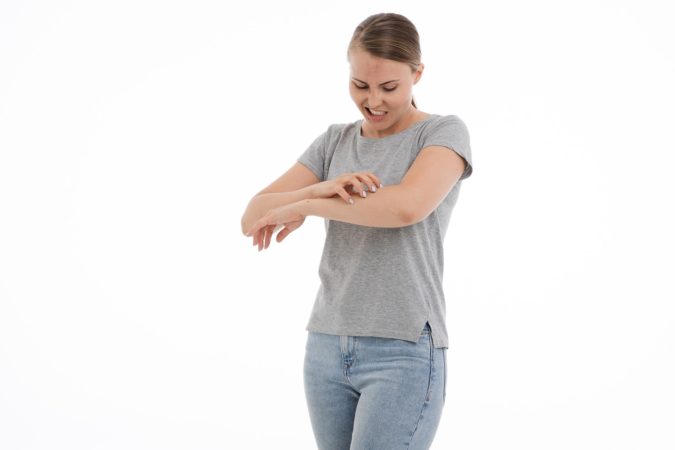
Molds are a problem when they land in damp spots and start growing.
Molds produce allergens that can lead to a variety of health problems when the microscopic spores are inhaled.
Symptoms include itchy eyes, chronic coughing, headaches, breathing difficulty, rashes, tiredness, asthma attacks, sinus issues, and frequent sneezing.
Some species of mold produce toxins that are harmful to people when they grow on stored food and are ingested.
Molds also gradually destroy the things they grow.
The longer it grows, the more damage it causes to furnishings like curtains and cushions so, to save money and your stuff, you must reduce mold growth in your home.
How Do I Get Rid Of Mold Safely and Cheaply?
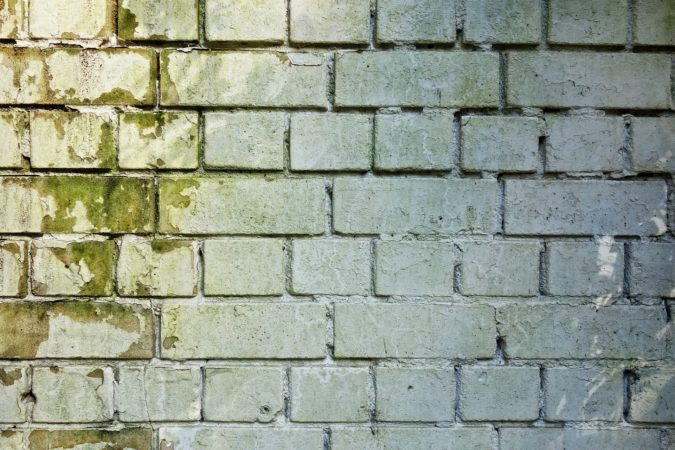
Mold only grows in the presence of moisture.
If there is mold growth in your home you need to clean up the mold and fix your moisture issues or the mold will likely return.
Here are some effective ways to get rid of mold:
Step 1
Mold will not grow if moisture is not present so control it by reducing or eliminating moisture sources.
If you see condensation on windows, dry the affected surfaces. Try to reduce humidity, open windows, insulate cold surfaces like pipes, and increase air temperature when practical.
Vent dryers and gas heaters externally.
Use fans, extractors, air conditioners, dehumidifiers, and air filtration systems to help reduce humidity and control airborne spores. Check filters periodically to ensure they’re not contaminated with mold.
Aim for relative humidity in your home of below 60% as this will also help inhibit mold growth. Use a humidity meter to measure this. You can get them cheaply at most hardware stores.
Step 2
Mold requires cellulose as a food source in order to grow so use cellulose-free building materials wherever possible.
Step 3
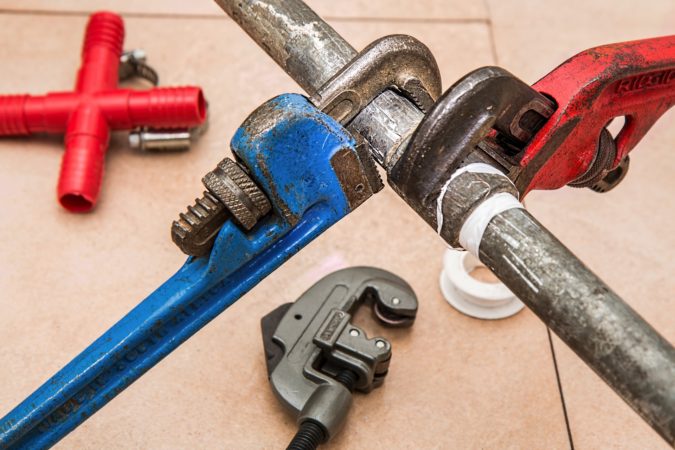
Dry out flooded or mold-affected materials thoroughly. Remove them if they are easily replaceable.
Carpet and other porous surfaces may have to be thrown away if they get moldy as it’s difficult to remove mold from these completely.
Do not paint or caulk moldy surfaces as it’ll likely peel. Clean off the mold and dry these surfaces before painting.
Clean out gutters regularly.
Try to not let water collect around foundations. Dig trenches and install drainage to help remove pooling water.
Step 4
Fix leaks and other water problems as soon as possible.
Step 5
Clean the mold in your home with the following non-toxic options:
Option 1: Hydrogen Peroxide
This anti-fungal, anti-viral, and anti-bacterial solution kills mold on fixtures, floors, and walls.
Pour 3% concentration hydrogen peroxide into a spray bottle and saturate the moldy surfaces and leave to sit for 15 minutes.
Then scrub the area to remove stains and wipe clean.
Option 2: Vinegar
Distilled vinegar is a mold killing ninja.
Pour it neat into a spray bottle and spray surfaces.
Leave it to sit about an hour then wipe clean with water and allow to dry.
Option 3: Baking Soda
Baking soda kills mold and absorbs moisture, helping to keep mold away.
Add 1 tsp of baking soda to a small spray bottle of water and shake to dissolve.
Spray the moldy zones then scrub to remove the mold.
Now wipe down with water and a cloth to clean off.
Respray the surface and let it dry to kill any remaining mold and prevent its return.
All of these options are non-toxic alternatives to harsh chemical cleaners and they’re low cost and commonly available in supermarkets.
Option 4: Buy A Ready-Made Chemical Product
Do you just want to get rid of your unslighty, black speckles with minimum effort?
Curtain Magic is a spray on product that removes mould without the need to take down curtains, blinds, drapes, fabric lining, and works on all colourfast fabric in minutes.
It contains +/- 1% sodium hypochlorite (chlorine bleach) and a number of non-toxic ingredients and has a 6-month shelf life. *Note that bleach discolours but doesn’t actually get rid of it.
What is Mildew?
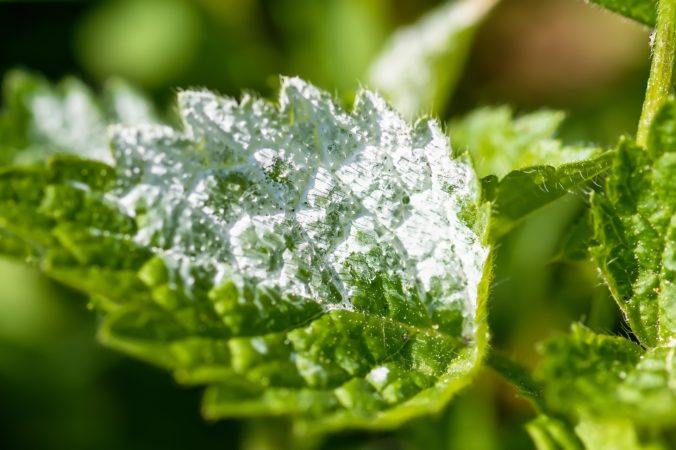
Mildew is a type of fungus that appears white and grows flat on surfaces.
It can thrive on many organic materials, including clothing, leather, paper, and the ceilings, walls, and floors of homes or offices with poor moisture control.
Where Is Mildew Usually Found?
Mildew is commonly found in homes and buildings but without a food source (any organic material), moisture and warmth, mildew can’t grow and reproduce.
As glass, plastic, and concrete provide no food for organic growth, they cannot support mildew growth without bio-film present.
Preventing mildew growth, therefore, requires a balance between moisture and temperature.
What Difference Does Mildew Make?
Mildew can be detrimental to your health, especially if you have respiratory conditions, such as asthma.
It may also cause itchy eyes, coughing after exposure, or wheezing.
People with compromised immune systems can develop fungal infections after exposure to mildew.
Mildew also sometimes compromises the structural integrity of buildings as it decomposes building materials, which can be dangerous.
It can also permanently damage carpets, books, and furniture so getting rid of mildew is a no-brainer.
How Do I Get Rid Of Mildew Safely and Cheaply?
Here’s what to do:
Step 1
Reduce or eliminate moisture sources.
Use air conditioners, dehumidifiers, and air filtration systems that help to reduce and control airborne spores.
Air conditioners inhibit indoor mildew growth by lowering indoor temperatures and recirculating indoor air.
Step 2
Properly ventilate mildew-prone areas.
Aim to lower humidity in affected areas using air-conditioning units or install fans to extract moist air.
Step 3
Clean with the following non-toxic options:
Option 1: Vinegar & Oranges
Rub a cut orange on to the mildew. After a few minutes spray the area with white vinegar then wipe it clean.
Option 2: Toothpaste
If you’ve got mildew in your carpet, spray it with warm water and apply toothpaste with a scrubbing brush. Wait several minutes then spray with water and clean off. Dry thoroughly.
Option 3: Tea Tree Oil & Vinegar
Tea tree oil is an anti-bacterial, anti-fungal essential oil and is also beneficial for allergy relief.
Pour 1 cup of white vinegar into a spray bottle then add 10 drops of tea tree oil and shake well.
Spray your entire surface to clean with this solution and leave it to dry fully.
The smell is strong, but do not rinse it off, just wait until the smell dissipates.
To limit your exposure to mold and mildew:
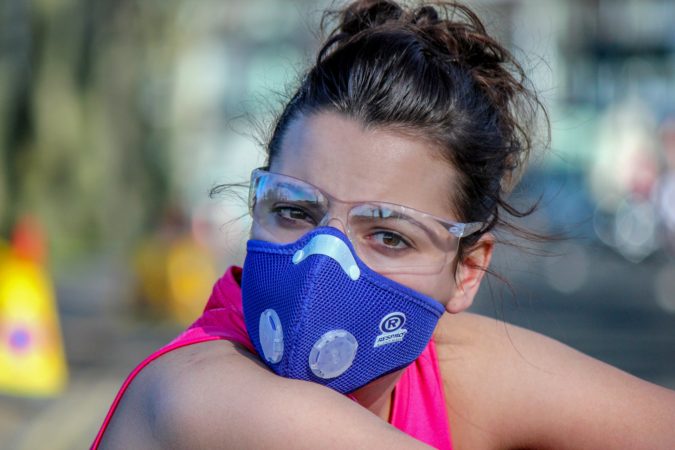
- Wear a properly fitting N-95 respirator when removing it.
- Use long rubber gloves.
- Wear goggles to avoid getting spores in your eyes.
- Wash your clothes after a clean-up.
How Will I Know I’m Done With Mold & Mildew?
You’ve fixed the moisture problems.
You’ve removed the mold or mildew so you can no longer see or smell related odours.
You’ve revisited the cleaned areas to check they are remaining mold and mildew-free.
Great job!
If you found this post useful, please pin one of the images below or share it so others can benefit too.
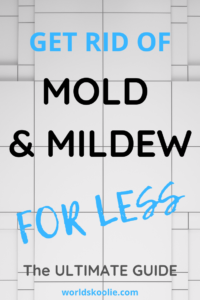
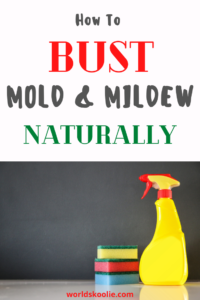
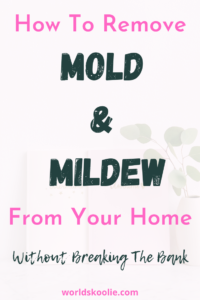
Thanks!

Meagan

